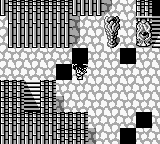


Require deactivation at the end of the trapping period.Do not prevent trapped animals from injuring each other (e.g.Fairly non-selective in the species caught.The disadvantages of using dry pitfall traps include the following: Each trap can collect multiple animals.Typically do not kill the animals (except inadvertently).The advantages of using dry pitfall traps include the following: An example of this would be trapping for ground dwelling spiders in a remote part of a forest. In certain isolated locations, dry pitfall traps are the only practical method of catching small, ground dwelling vertebrates and invertebrates. Traps can be set up on known runs, to collect specific species.ģ) Traps can be set up with a lid or cover that encourages behavioural responses in certain animals to take refuge and therefore fall into the trap.Ĥ) Baits can be used to attract certain species or animal groups. There are several basic approaches to using pitfall traps:ġ) For survey work, traps that catch the animal randomly - animals foraging on the ground 'accidentally' fall into the trap.Ģ) Traps that are used in conjunction with a 'drift fence' barrier can be used to direct animals towards the trap.

It produces an "index" by which several geographic locations can be compared. The pitfall trap is a relative method of estimating animal numbers and species, thus it cannot be used to estimate absolute population sizes or overall species richness of an area. Pitfall traps are used for several reasons including:ġ) capturing species that are difficult to obtain by other methods Ģ) estimating relative abundances and species richness or for catching particular species of animals ģ) estimating daily activity of different animals Ĥ) determining movement patterns of individual animals Wet pitfall traps cannot be used for vertebrates so the main issue is to ensure that vertebrates are not caught as by-catch in wet traps set for invertebrates. Aqueous solutions used in these traps may include: formalin (10% formaldehyde), alcohol, methylated spirits, trisodium phosphate or picric acid. Wet pitfall trap – A pitfall trap containing a solution designed to trap, kill and preserve an animal or animals. The openings of the traps are often covered by a slightly raised lid, stone or other object to keep out predators and prevent trapped animals from being overheated (during the day) or drowned (when it rains). These traps are often used to capture small mammals, reptiles and frogs that fall into the pit and cannot escape due to the smooth walls. This helps to funnel animals into the trap in order to increase the numbers of animals captured.ĭry pitfall trap - A hole in the ground into which a bucket or pipe is placed into the soil so that the mouth is level with the soil surface. Definitionsĭrift fence – A length of fence, often made with aluminium or nylon fly-wire mesh, which runs across the centre of a pitfall trap. The Panel has made the following considerations in relation to the use of dry and wet pitfall traps. Solutions such as formalin are used in wet pitfall traps because they preserve the specimen, not because they are humane because there is no rapid loss of consciousness before drowning and preserving. The use of pitfall traps was considered by the Animal Research Review Panel following concerns it had regarding the use of formalin as a killing agent in wet pitfall traps. Pitfall traps tend to be used more in low rainfall, arid habitats than in mesic environments. Pitfall trapping is a sampling technique that is widely used to examine species occurrence during surveys, spatial distribution patterns, compare relative abundance in different micro-habitats, study daily activity rhythms, and study seasonal occurrence.


 0 kommentar(er)
0 kommentar(er)
